15 Non-Staged Photos That Make Familiar Things Look Suspiciously Fantastic
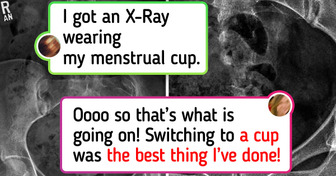
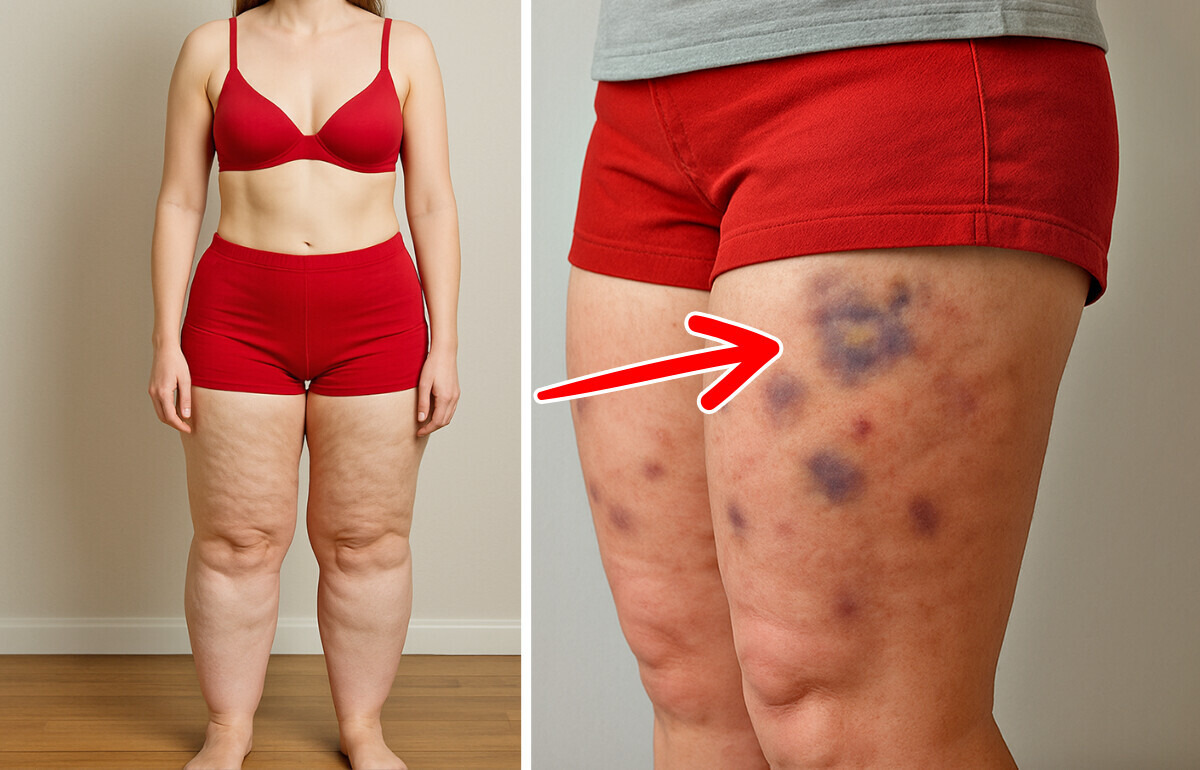
Lipedema is a little-known but surprisingly common condition that causes fat to build up in the legs, thighs, and sometimes arms, often leaving people confused and frustrated. It mostly affects women and usually shows up during times of hormonal change like puberty, pregnancy, or menopause. Unlike regular weight gain, this fat is painful, hard to lose, and often leads to swelling and bruising. Let’s see the signs that might reveal that you suffer from lipedema.
DISCLAIMER: CONTENT IS PROVIDED FOR INFORMATIONAL PURPOSES ONLY AND IS NOT INTENDED AS A SUBSTITUTE FOR MEDICAL ADVICE. SEEK GUIDANCE FROM YOUR DOCTOR REGARDING YOUR HEALTH AND MEDICAL CONDITIONS.
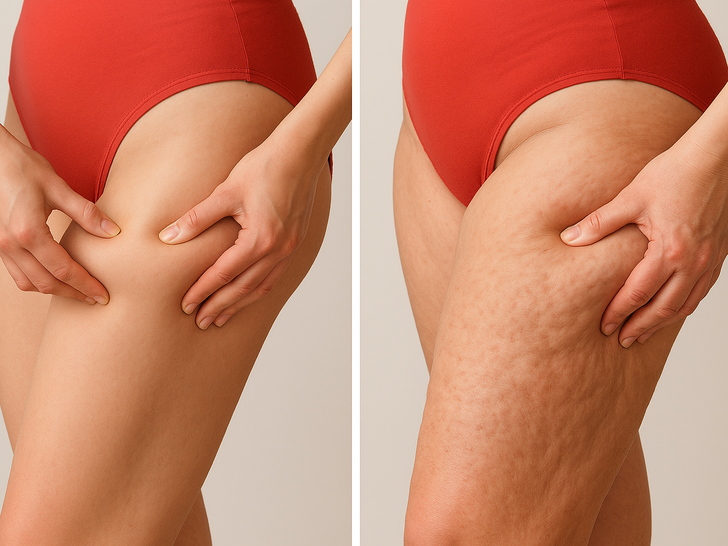
One of the hallmark symptoms of lipedema is the presence of small, firm nodules or bumps under the skin, often described as feeling like “peas” or “grains of rice” embedded within the fatty tissue. These lumps are not visible from the outside but can be felt when pressing on the affected areas, especially on the thighs, buttocks, or arms.
This uneven texture is caused by fibrotic changes in the fat and can contribute to discomfort or tenderness.

Frequent and unexplained bruising is a common symptom of lipedema, often occurring even after mild pressure or minor bumps. This happens because the affected fat tissue is more fragile, and the small blood vessels within it can break easily, leading to bruises without any obvious injury.
The bruising tends to appear on the legs, thighs, or arms, where lipedema fat typically accumulates, and can be both physically and emotionally distressing.
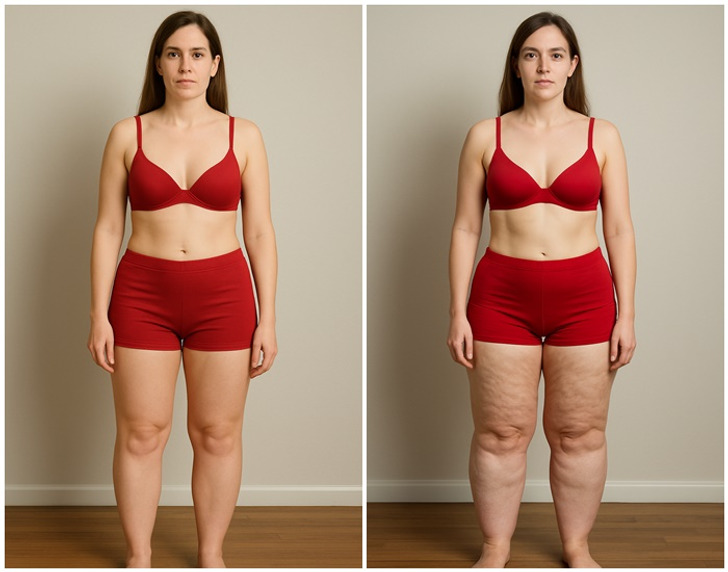
The abnormal accumulation of fat in the buttocks, thighs, and calves often results in a disproportionate lower body compared to the upper body. This fat buildup is typically symmetrical and resistant to traditional weight loss methods like diet and exercise. Unlike general obesity, lipedema fat is often painful, tender to the touch, and can lead to mobility issues over time.
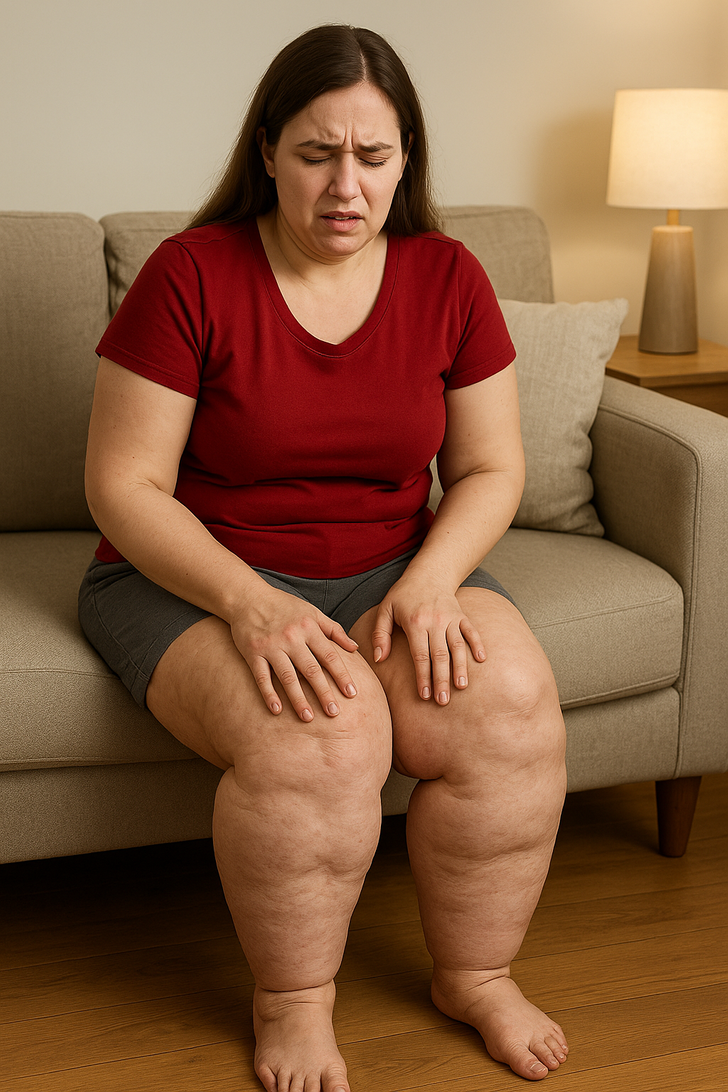
Pain is a common and often distressing symptom of lipedema, ranging from mild tenderness to severe, chronic discomfort. This pain is typically felt in the affected areas, such as the legs, thighs, and sometimes arms, and can be constant or triggered by pressure, movement, or even light touch. The discomfort is believed to result from inflammation, increased pressure within the fat tissue, and potential nerve involvement.
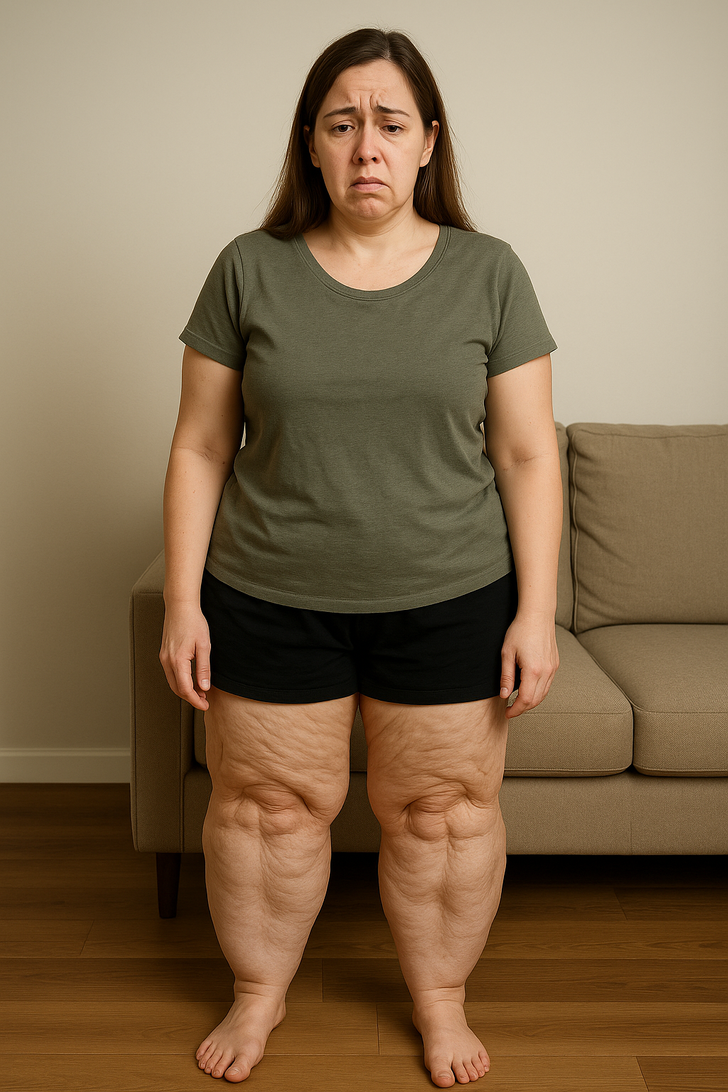
Loose or sagging skin is a symptom that can develop in individuals with lipedema, particularly as the condition progresses. This occurs due to the abnormal accumulation of fat beneath the skin, leading to increased weight and tension on the skin’s connective tissues.
Over time, this added stress can cause the skin to lose its elasticity, resulting in a sagging appearance. Also, lipedema can cause large folds of skin to form, contributing to the characteristic changes in body shape associated with the condition.

Fatigue is a prevalent and often debilitating symptom of lipedema, characterized by an overwhelming sense of tiredness that can significantly impact daily life. This fatigue may stem from the increased physical effort required to move limbs affected by lipedema, which often feel heavy and tender. Additionally, the chronic pain and emotional stress associated with the condition can contribute to persistent exhaustion.
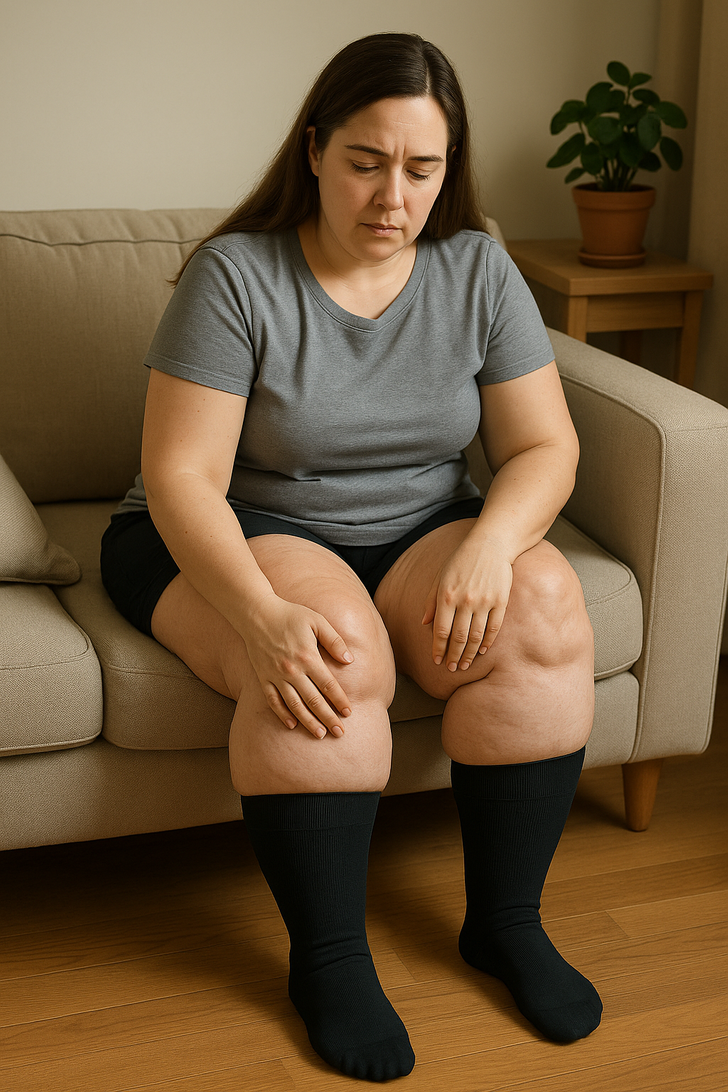
There is no known cure for lipedema, but treatment can manage symptoms.
Aging may not be the most pleasant process, as it often comes with certain drawbacks, like sudden discomfort. However, many of these things are perfectly normal, and nothing to worry you.











